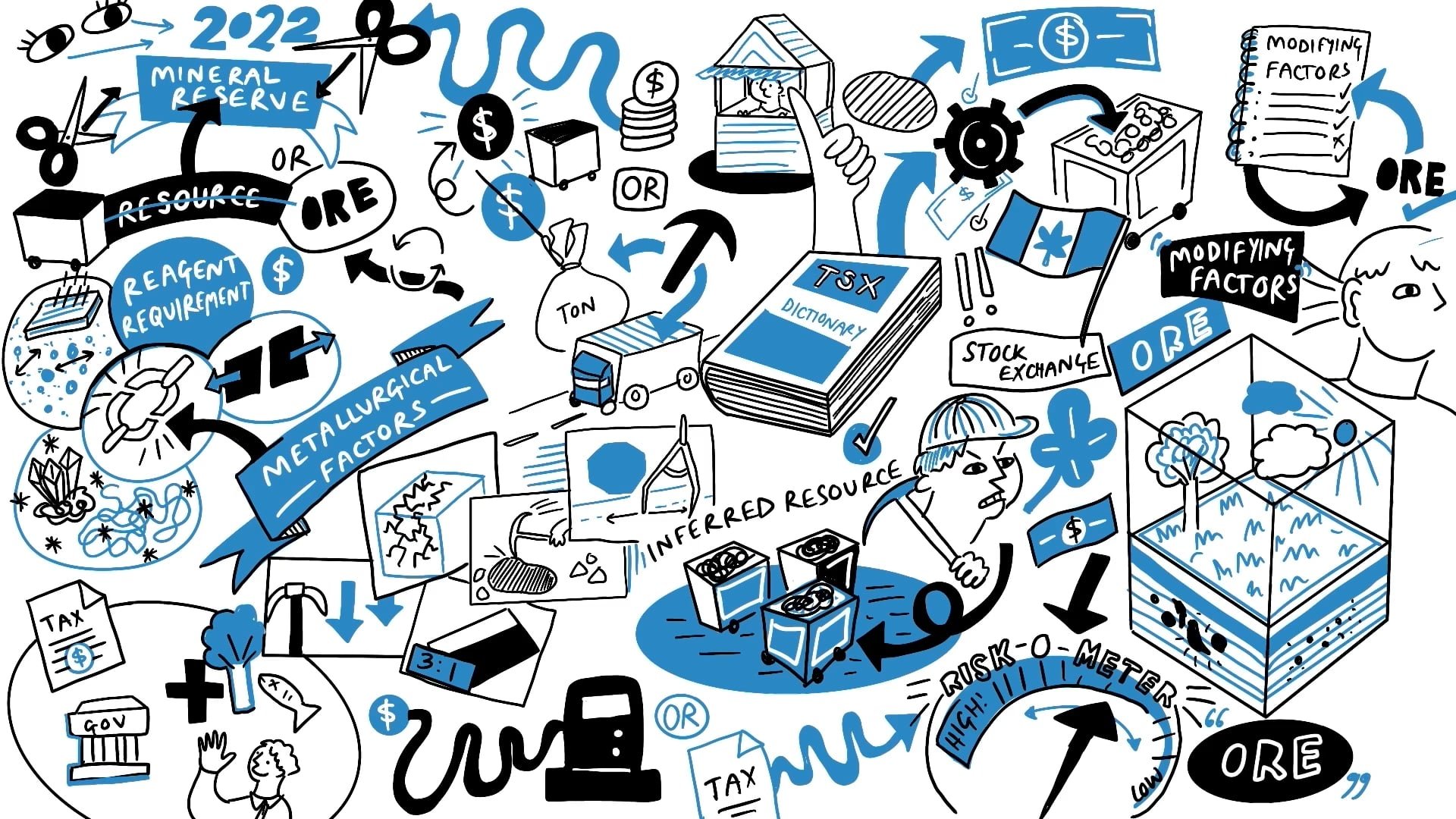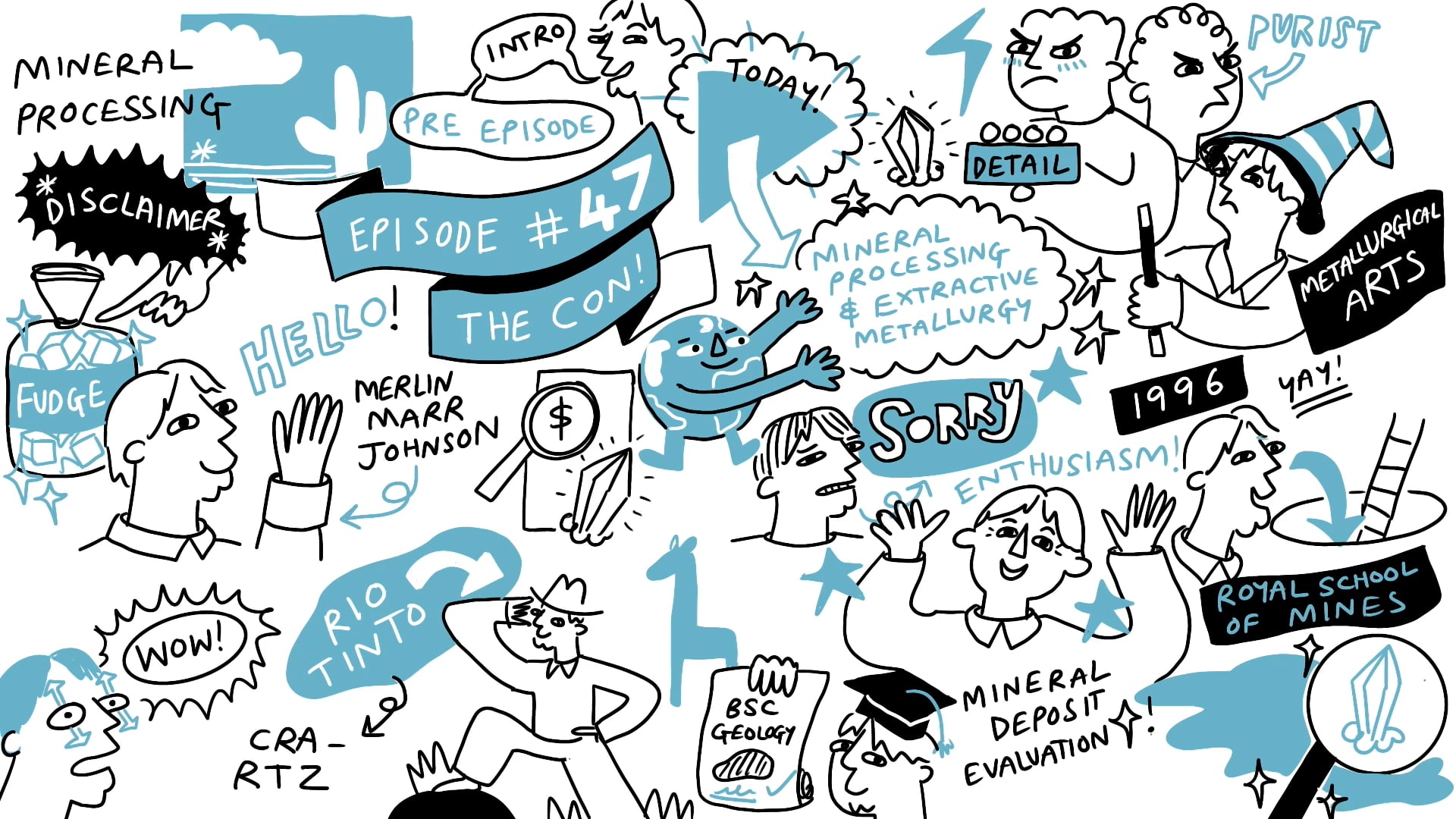What is the Con?

More episodes
Transcript
Hello and welcome to The Con.
Crux investor and I have decided to create a series of videos to help investors analyse and understand the resources market. We will use real-world examples as much as we can to share our thoughts on how the sector works.
We chose the name ‘The Con’ for a very specific reason: when working on a mineral project, one of the key stages in the development of an operation is to take the ore and enrich it to the point that it becomes a concentrate. That concentrate is often many times richer than the original ore. It's a key-value point on the way to your finished product. For example, if you are in a Copper operation, the concentrate is just the Copper minerals, but it isn't Copper metal. In a Gold operation, the concentrate often contains Gold sulphides or sulphides with Gold in it, but it isn't the Gold bars. Thus, concentrates are a key part of the process but they're not the finished product. As we developed this series, we realized that whilst the content provided would not be the final answer, we aim to enrich your understanding of the resources market and go on the journey with you. We will give you access to the ideas and concepts that professional resource investors will go through. Someone who has spent 20-25 years in the market will have gone through everything that we will be talking about here.
We will look at resource companies under a series of headings, and analyse them in the same way that professional investors or professional market participants do. This is how they form their opinions and enrich their ideas.
They start by sifting and winnowing the projects, the teams and the companies to the ones that they want to spend more time on, and they reject those that they want to spend less time on.
For you, the retail investor, your starting point will be news releases or a recommendation from someone in the Club, or something that you've seen or heard about a company that looks interesting. That's the raw material you get given.
Hopefully, you will proceed to take it through several stages, potentially using these videos as a guide and your rider point, which is the concentrate - your enriched, higher value conclusions.
It's not the final step. You haven't gone all the way to the metal. We're not making true investment decisions, but this is absolutely a key step on the path to that finished product.
Our choice of naming the series ‘The Con’ was not without a nod to other types of cons. The resources sector is famous for its cons, as in confidence tricks. It's an industry with a huge amount of jargon. It has many technical components and it needs a huge amount of money before the real con - the concentrate - is produced.
Cons, as in confidence tricks, can proliferate; they can be a real obstacle to the retail investor. The mining sector has a certain reputation for this.
It starts with Mark Twain saying, ‘A mine is a hole with the liar standing above it’. This is a slightly tongue-in-cheek episode because we know that there are management teams that stretch the truth and there are some shysters out there. There are saints and sinners in the resources sector as in any other sector.
I do like the idea that a con is an old English word meaning to study and to learn, for gaining knowledge. What we're really working on here is using the idea that through processing the information that comes, you can reach a point that gives you an enriched product - the con.
Our aim through this series is to look at the basic building blocks of your decision-making process, and at the end you will be able to evaluate a company like the professionals: which team is credible, which team is serious, what kind of capital structure is serious, what kind of project is serious? And it will hopefully guide you to a point where you can make better decisions for your investments.
That's the basic introduction. The structure will be very similar to how I analyse resource companies myself. I spent many years as an analyst and I’ve broken the topics down into a series of headings.
Now, of course, there is overlap, but on each of the headings that I will run through next, I will do a subsequent episode where I can drill down into more detail on that subject. I will include some real-world case studies, where the topic that I'm covering in that episode came to light and affected the value of the company or the trajectory of the company in question. In addition to using classic case studies, I will bring the topic up to date by discussing current events in the market.









































.jpg)
.jpg)
.jpg)
.jpg)















